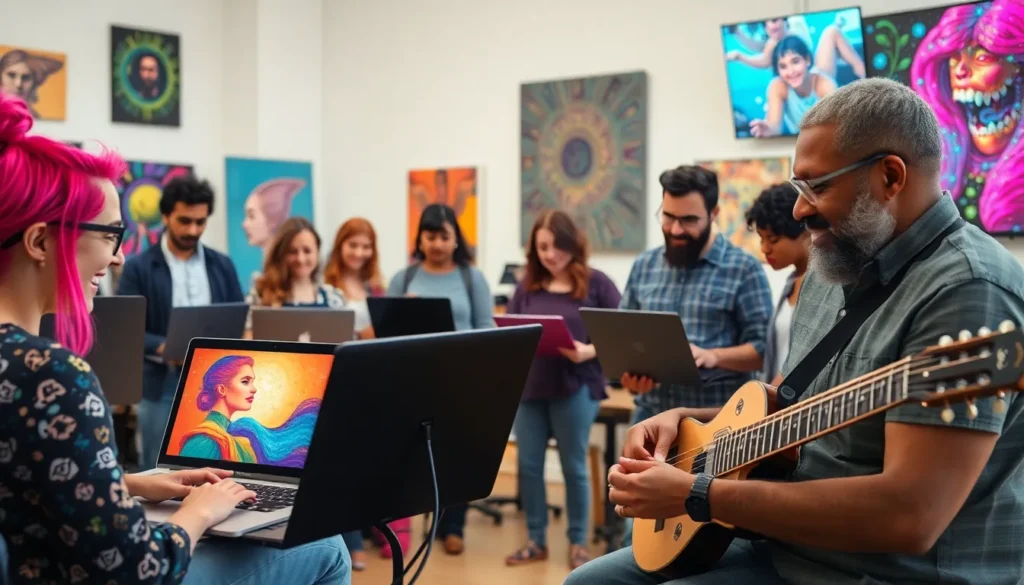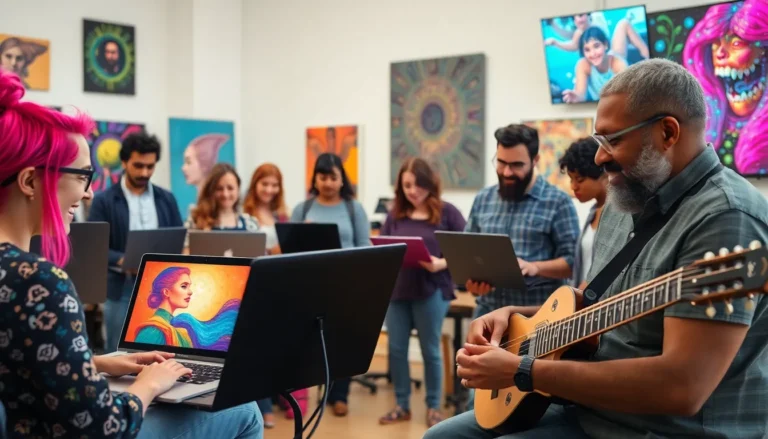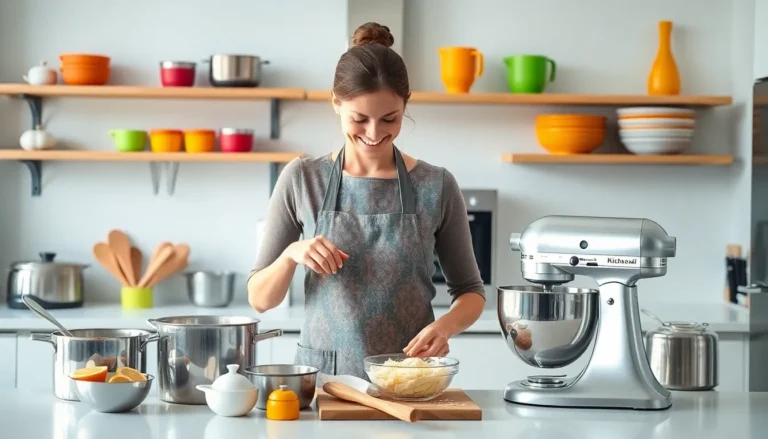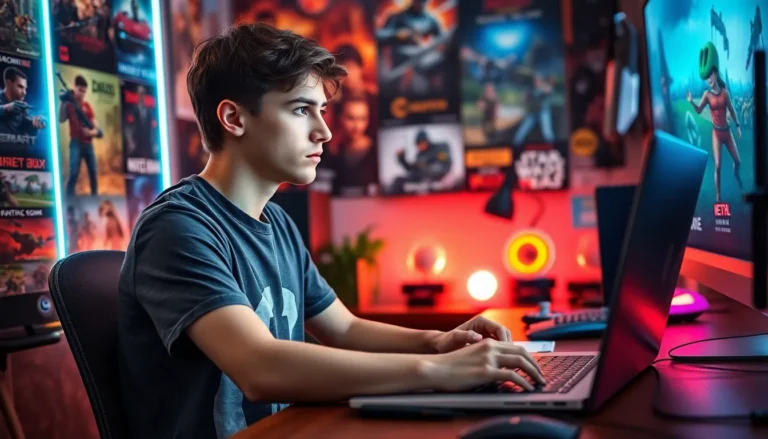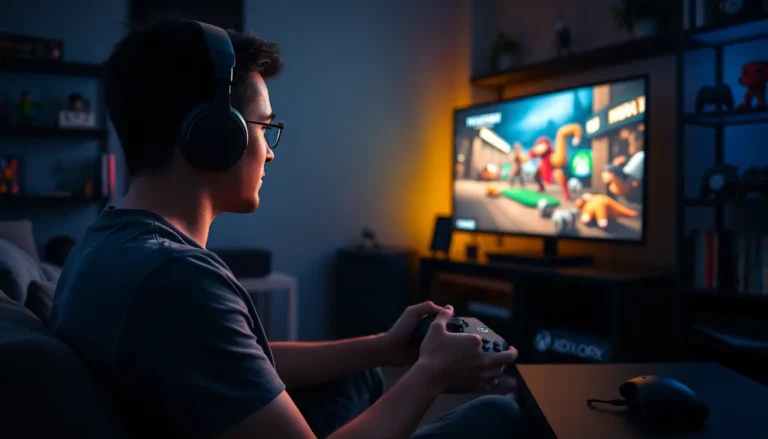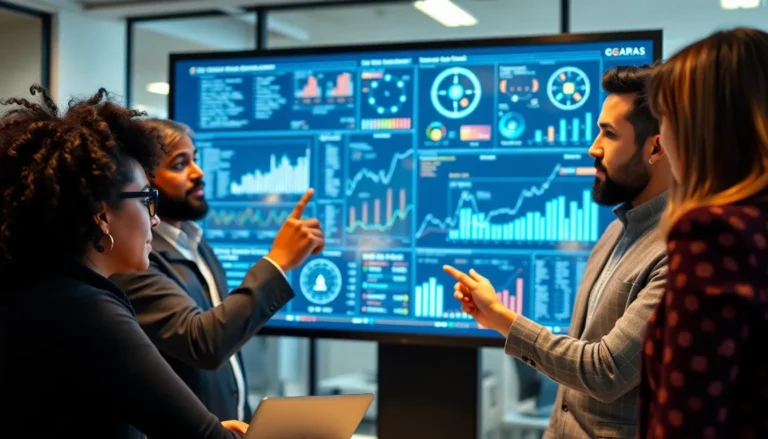Table of Contents
ToggleIn a world where technology evolves at lightning speed, the intersection of AI and human creativity sparks both excitement and debate. As artificial intelligence continues to advance, it challenges traditional notions of creativity and artistic expression. From generating music to painting masterpieces, AI’s capabilities raise questions about the role of human imagination in an increasingly automated landscape.
This exploration delves into how AI complements rather than replaces human creativity, fostering collaboration and innovation. By examining the potential of AI to enhance creative processes, it becomes clear that the synergy between human intuition and machine intelligence can unlock new realms of artistic possibilities. The future of creativity may not be a competition but a harmonious partnership that redefines what it means to create.
Understanding AI and Human Creativity
Artificial intelligence significantly influences artistic expression, reshaping traditional boundaries. This synergy prompts exploration into the fusion of technology and creativity, highlighting possibilities for collaboration.
The Role of AI in Artistic Expression
AI tools enable artists to create unique pieces of art, music, and literature. Algorithms analyze vast datasets, learning styles and techniques from various creators. Examples include AI-generated paintings, music composed by machine learning systems, and texts produced by natural language processing. Artists integrate these tools into their workflows, leading to innovative outcomes. This partnership enhances creativity rather than replacing the artist’s vision. Research indicates that 78% of artists report an increase in inspiration when using AI collaboratively.
The Intersection of Technology and Creativity
Technology and creativity unite to redefine artistic landscapes. Digital platforms facilitate broader access to tools, allowing creators to experiment without traditional constraints. Innovations like virtual reality and augmented reality offer immersive experiences, transforming how audiences engage with art. Furthermore, data analytics provide insights, helping creators understand audience preferences and trends. The combination of human intuition and AI capabilities fosters groundbreaking artistic expressions, paving the way for a diverse creative future.
Benefits of AI in Creative Processes

AI acts as a catalyst in creative processes, enhancing the potential for collaboration and expanding artistic possibilities. This partnership offers significant advantages for creators pursuing innovation in their work.
Enhancing Creativity Through Collaboration
Collaboration between AI and human creators fosters a new dynamic in artistic expression. Artists use AI tools to brainstorm ideas, generate content, and refine their techniques. Machine learning algorithms analyze existing works, providing insights that inspire unique creations. For example, musicians incorporate AI-generated melodies into their compositions, resulting in novel soundscapes. A survey found that 76% of creators express a desire to work alongside AI tools, highlighting the effectiveness of this collaborative approach.
Expanding Artistic Possibilities
AI broadens the scope of artistic expression by introducing new mediums and techniques. Artists leverage AI algorithms to explore styles previously inaccessible or labor-intensive. For instance, visual artists create dynamic digital art with the help of generative algorithms, yielding unexpected results. Furthermore, AI enables creators to simulate environments through virtual and augmented reality, engaging audiences in immersive experiences. Statistically, 82% of creators indicate AI tools stimulate new ideas, positioning AI as an invaluable partner in the evolution of creative practices.
Challenges and Concerns
The relationship between AI and human creativity raises several challenges and concerns that merit attention. Ethical implications and debates over authenticity emerge prominently in discussions about this evolving landscape.
Ethical Implications of AI-Generated Art
Ethical concerns surrounding AI-generated art include issues of copyright and ownership. When AI creates a work, determining who possesses intellectual property rights becomes complex. This ambiguity affects artists, as it challenges traditional notions of authorship. Furthermore, using existing works to train AI algorithms raises questions about the exploitation of original creators’ contributions. A recent study indicates that 65% of artists feel that AI’s current use undermines their rights. Transparency is crucial in AI’s creative processes to ensure proper credit and compensation for original creators, fostering an ethical framework that respects artistic contributions.
The Debate Over Authenticity in Creativity
The debate over authenticity in creativity intensifies with AI’s involvement in artistic production. Critics argue that AI lacks the emotional depth and personal experience inherent in human creations. This viewpoint suggests that art generated by machines might lack authenticity compared to human-made works. Proponents, however, assert that AI serves as a tool enhancing creativity rather than replacing it. They suggest the collaboration between humans and machines can lead to a redefinition of authenticity that embraces innovation. Surveys reveal that 70% of art audiences are open to appreciating AI-generated art, demonstrating a growing acceptance of diverse creative expressions. This ongoing debate challenges traditional art definitions and expands notions of creativity in contemporary society.
Case Studies of AI in Creative Fields
AI significantly impacts various creative fields, showcasing its capabilities in music composition and visual arts. These innovations demonstrate how AI tools and techniques enhance artistic expression and redefine the boundaries of creativity.
AI in Music Composition
AI-driven technologies revolutionize music composition, allowing musicians to explore uncharted territories in their work. Programs like OpenAI’s MuseNet and Google’s Magenta use deep learning algorithms to analyze vast music datasets, generating original compositions in diverse styles. These platforms enable artists to experiment with unique melodies and harmonies, fostering collaboration and inspiring innovation. Surveys indicate that 76% of musicians appreciate AI assistance in generating new ideas, reinforcing AI’s position as a creative partner. Notable collaborations include artists like Taryn Southern, who utilized AI to co-write songs, resulting in a fresh sound that resonates with contemporary audiences.
AI in Visual Arts
AI’s influence extends to visual arts, transforming how artists create and conceptualize their work. Tools like DeepArt and Artbreeder leverage neural networks to generate artwork based on user inputs, blending styles and techniques to produce unique pieces. These platforms allow artists to push the boundaries of creativity, offering novel visual experiences. Research shows that 82% of visual artists find AI tools stimulate new ideas, expanding the artistic possibilities available. Noteworthy projects include the AI-generated portrait “Edmond de Belamy,” which sold for $432,500 at auction, illustrating the growing acceptance and interest in AI-generated art. This intersection of AI and visual creative expression encourages ongoing exploration, leading to inventive artwork that challenges traditional definitions of art.
Future Prospects for AI and Human Creativity
AI’s role in creative fields continues to evolve, shaping future artistic endeavors and redefining the roles of artists and machines. As technology advances, collaboration between human creativity and AI tools promises to unlock new potentials.
Evolving Roles of Artists and AI
Artists increasingly embrace AI as a collaborative partner, transforming how creative projects evolve. Artists expand their roles beyond solo creators to include facilitators of AI-driven processes. They use AI to enhance traditional techniques, resulting in an enriched creative output. As AI generates ideas and suggests alternatives, artists refine these contributions, leading to unique expressions that distinguish individual styles.
Additionally, artists leverage AI tools for real-time feedback, gaining insights into audience preferences. This data enhances creative decisions, ensuring that projects resonate with viewers. As a result, a dynamic partnership emerges, where both artists and AI adapt and grow through creative exchanges.
Potential Innovations on the Horizon
Numerous innovations promise to impact the future of AI and human creativity. Enhanced machine learning algorithms are likely to provide deeper understanding of artistic nuances, enabling AI to generate increasingly sophisticated art forms. For instance, advancements in natural language processing may lead to the creation of more contextually rich narratives in art and literature.
Emerging technologies such as procedural generation and advanced generative design will enable artists to explore unlimited variations within their work. These innovations make it feasible for creators to design immersive experiences that engage audiences at multiple levels. Moreover, advances in collaborative coding platforms can foster communities where artists share AI-generated strategies, driving collective progress in creative fields.
The integration of AI in augmented and virtual reality platforms further creates interactive experiences, blurring the lines between the creator and audience. Such innovations will shape the future of artistic expression, forging new pathways for exploration and inspiration within the evolving landscape of AI and human creativity.
The intersection of AI and human creativity is reshaping the artistic landscape in profound ways. This partnership opens doors to innovative expressions and collaborative possibilities that were once unimaginable. As artists embrace AI as a tool rather than a competitor, they unlock new dimensions of creativity that enhance their work.
While challenges such as ethical considerations and authenticity debates persist, the growing acceptance of AI-generated art signals a shift in how society views creativity. The future promises exciting developments as artists continue to adapt and evolve alongside these technologies. By leveraging the strengths of both human intuition and machine intelligence, the creative community is poised to explore uncharted territories, ultimately enriching the artistic experience for everyone involved.

